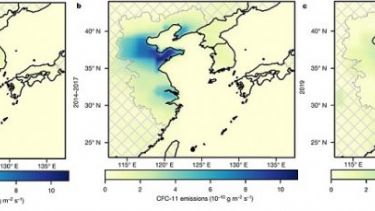
A research team at Kyungpook National University (KNU) analyzed the gas movement in the center of the galaxy and suggested a new way to detect multiple massive black holes.
Jae Jin Shin, a postdoctoral researcher, School of Earth System and Sciences at Kyungpook National University, Professor Min Jin Kim, and Professor Jong Hak Woo of Seoul National University found evidence that there is a second massive black hole in the center of NGC 1068, about 47 million light-years away.
Multi-mass black holes are considered key to understanding the stages of galaxy merging. Large-mass black holes are also very difficult to observe in general but can be observed in the form of active galactic nuclei that occur when material enters a large-mass black hole. Thus, multi-mass black holes are mainly found in the form of multi-active galactic nuclei.
The main method of multi-active galactic nuclei detection is to find multiple nuclei in galactic photographs observed in multiple wavelength bands. There are only about 30 massive black holes discovered using this method. For statistical research, additional multi-mass black hole detection is of paramount importance.
Researchers at KNU used observations from the Very Large Telescope, an 8.2-meter telescope in Chile, to analyze the gas motion in the center of NGC 1068 and found another gas eruption about 600 light-years from the center of the galaxy.
Gas venting is a phenomenon in which surrounding gases are pushed out by massive energy from active galactic nuclei and is at the same time one of the powerful indicators of active galactic nuclei. In other words, the presence of another gas emission suggests the possibility of another active galactic nucleus in NGC 1068.
The study is significant in that in addition to the existing photographic method, it has found multiple active galactic nuclei using gas motion.
Jae Jin Shin, the research director, said, “We expect this study to play a major role in understanding galaxy mergers and further galaxy evolution by applying new methods using gas motion to many data that already exist.”
The study was published on February 16 in the international journal “The Astrophysical Journal”.






















